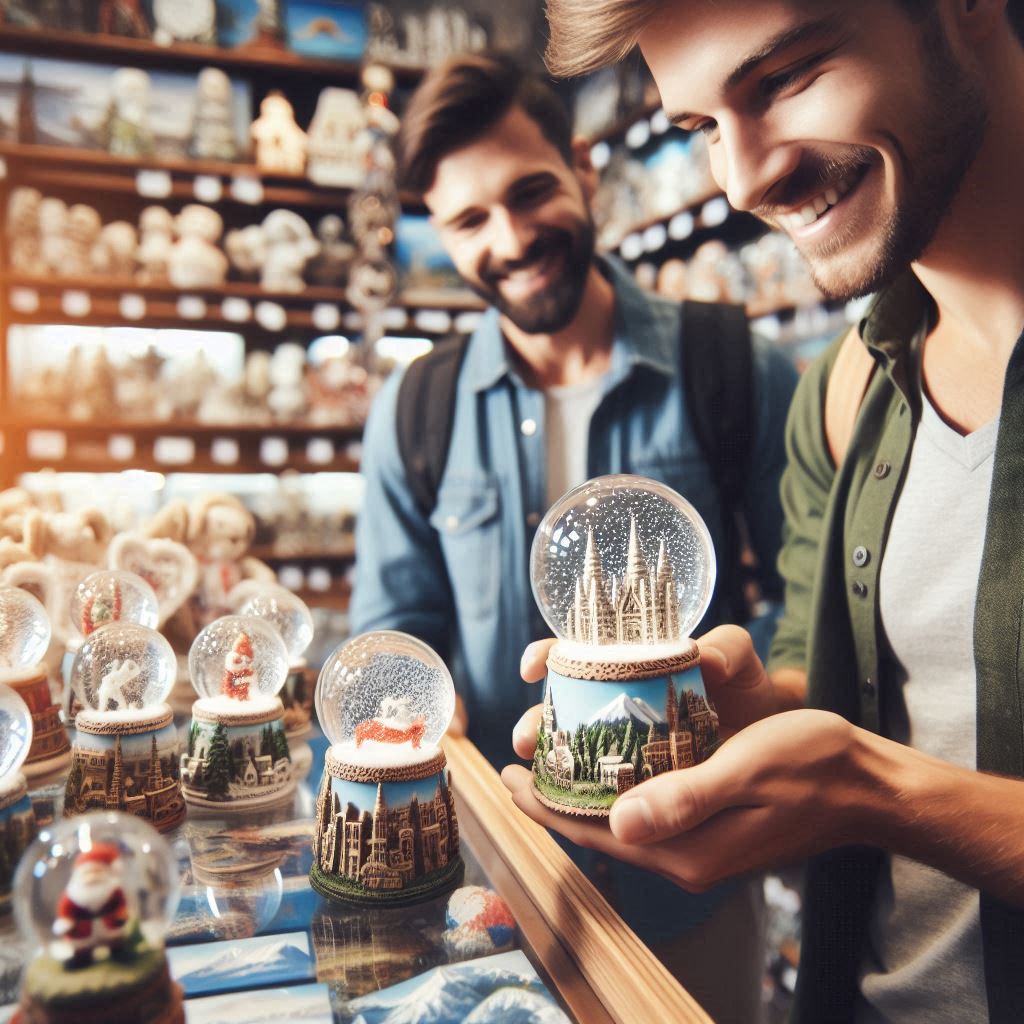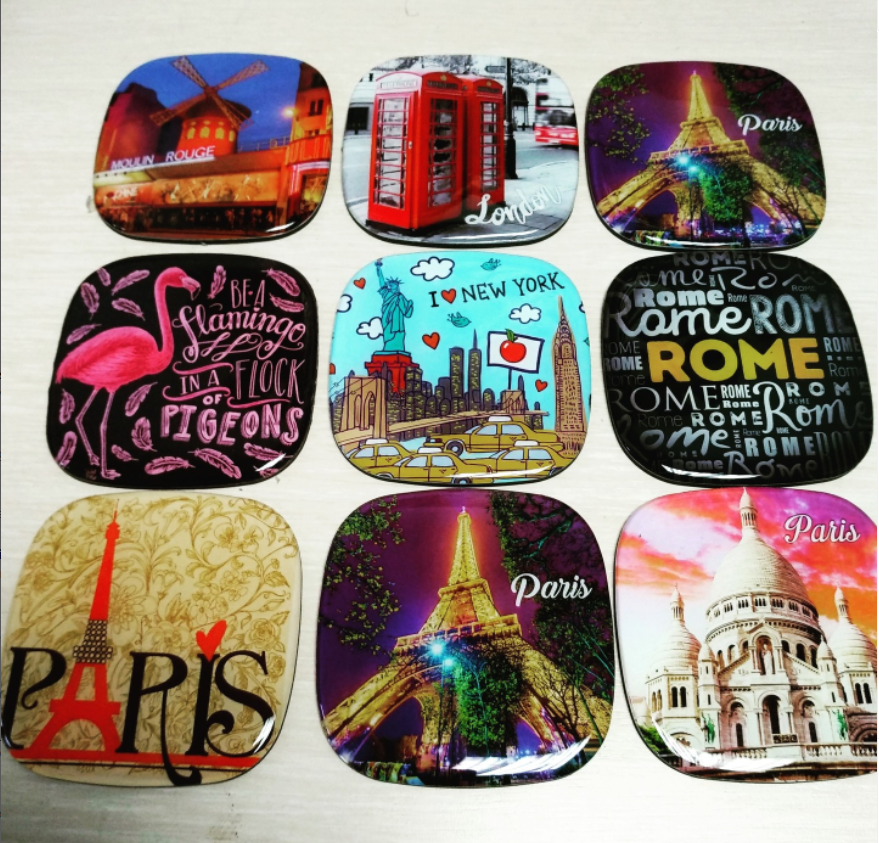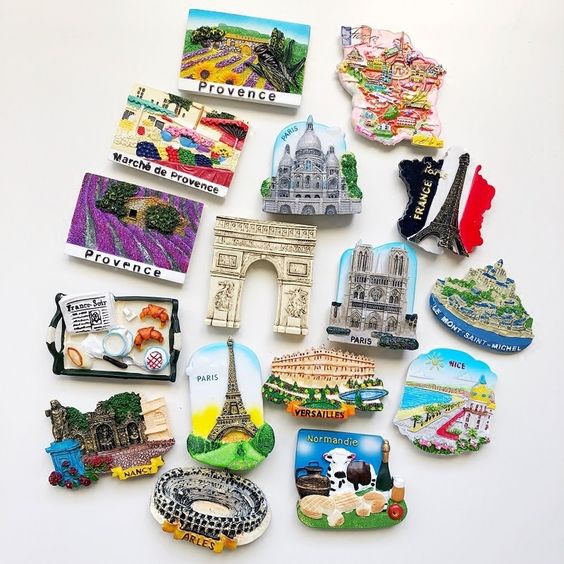As a retailer in the souvenir market, understanding your profit margins on resin souvenirs is a critical part of managing your business effectively. Whether you’re selling resin snow globes, fridge magnets, or figurines, it’s crucial to know the financial dynamics that influence pricing and ultimately affect your profitability. Without this knowledge, you could end up underpricing your products, leaving you with slim margins—or worse, running at a loss.
In the tourism souvenir market, resin products are among the most popular due to their affordable manufacturing costs, versatility, and broad appeal. However, what sets successful businesses apart is their ability to effectively balance costs and retail prices while maintaining high-quality standards for customers.
In this article, we will dive deep into the key aspects of profit margins on resin souvenirs and discuss practical steps that retailers can take to maximize profitability while offering attractive products to consumers.
How Resin Souvenirs Are Priced: The Cost Breakdown

To understand profit margins, it’s important to first break down how resin souvenirs are priced. The cost of resin souvenirs is composed of several key factors, which directly affect how much retailers should charge their customers to remain profitable.
- Raw Material Costs: Resin is the primary material used for these products, and its cost can vary based on quality and supplier. Prices for resin fluctuate based on market conditions, but generally, it is considered a cost-effective material, which is why resin souvenirs are often budget-friendly for both manufacturers and consumers.
- Labor and Production Costs: Resin products are often handmade, especially when dealing with custom or unique designs. Labor costs—whether it’s designing, casting, or finishing the items—are essential to consider. The more intricate the design, the higher the labor cost, and this will naturally increase the final price of the product.
- Customization and Design Fees: Retailers offering custom resin souvenirs, such as personalized snow globes or keychains, can charge a premium for these items. Customization can include adding logos, personalized messages, or unique figures that appeal to specific tourist destinations.
- Shipping and Handling: For international retailers, shipping costs are a crucial part of the resin souvenir pricing structure. Importing items from countries like China, where many resin products are manufactured, may involve significant shipping fees, customs duties, and taxes.
- Packaging Costs: Packaging also adds to the total price of the item. High-quality packaging can enhance the perceived value of the product, allowing you to mark it up accordingly. This is especially true for premium resin souvenirs such as large figurines or snow globes that require protective packaging.
By factoring in these costs and understanding the markup needed to cover expenses and make a profit, you can better determine your retail price.
Factors Affecting Profit Margins on Resin Souvenirs

Several factors influence the profit margins on resin souvenirs. Understanding these can help retailers make informed decisions about pricing, sourcing, and marketing.
- Material Quality: Higher-quality resin can increase production costs but may allow for a higher selling price. Consumers are willing to pay more for products that feel premium or are more durable. For example, a resin snow globe with fine craftsmanship and attention to detail may command a higher price than a mass-produced counterpart.
- Design Complexity: The more complex the design, the higher the production cost. Retailers should take into account the time spent on creating intricate designs or customizing souvenirs. High-quality designs not only look attractive but also contribute to higher selling prices.
- Customization Costs: Offering personalized souvenirs increases the value of the product but also requires additional steps in production. Retailers need to assess how much they are willing to invest in customization and whether the added cost can justify a higher retail price.
- Economies of Scale: Buying resin souvenirs in bulk can reduce the unit cost, thereby increasing profit margins. If you are able to source large quantities of products, you may be able to reduce the overall cost and offer more competitive prices without sacrificing margin.
- Market Demand: Retailers should always consider current market trends. If there’s a surge in demand for customized resin souvenirs, this could present an opportunity to raise prices and improve profit margins. However, it’s important to stay aware of market saturation—overpricing in a saturated market could lead to poor sales.
Markup Strategies for Resin Souvenirs: Finding the Right Balance

Setting the right price is essential for profitability. Marking up resin souvenirs correctly can determine whether a business thrives or struggles. However, finding the right balance between cost and price is not always easy.
- Cost-Plus Pricing: This is one of the most straightforward markup strategies. Retailers simply calculate the total cost of producing a resin souvenir (including materials, labor, and shipping) and then add a percentage for profit. For instance, if it costs $5 to produce a resin fridge magnet, a retailer might add a 50% markup, selling it for $7.50.
- Competitive Pricing: Many retailers opt for competitive pricing based on what others in the market are charging. However, this strategy requires a deep understanding of what competitors are doing and how to differentiate your resin products. For example, if competitors charge $10 for a standard resin figurine, you might offer a similar product with additional features or customization to justify a higher price.
- Premium Pricing: For high-end resin souvenirs (e.g., exclusive resin snow globes), a premium pricing strategy can be effective. This involves pricing the product significantly higher than the average market price due to its premium quality, limited edition status, or exclusive design.
- Volume-Based Pricing: For retailers buying in bulk, volume-based pricing can lead to better profit margins. By purchasing large quantities of resin souvenirs at a discount, you can afford to sell at a slightly lower price while still maintaining a healthy margin.
- Psychological Pricing: Many retailers use psychological pricing strategies, such as pricing products at $9.99 instead of $10. This strategy plays on consumer psychology, making the price appear lower and encouraging purchases.
Profit Margin Case Studies: Real-World Examples for Retailers

To further illustrate the concepts discussed, let’s look at two case studies of retailers who successfully managed profit margins on resin souvenirs.
- Case Study 1: A wholesale resin figurine retailer implemented cost-plus pricing but optimized production by sourcing materials from a more cost-effective supplier. By increasing their order size and cutting down on production inefficiencies, the retailer was able to maintain a high profit margin despite offering competitive prices.
- Case Study 2: A customized resin snow globe retailer offered personalization services to tourists, which significantly increased the perceived value of the products. By applying premium pricing to their custom snow globes, they were able to charge more than the average souvenir store and still see strong sales, ultimately increasing their profit margins.
How to Increase Profit Margins on Resin Souvenirs
There are several ways to increase your profit margins on resin souvenirs, without compromising on quality:
- Negotiate Better Pricing with Suppliers: By negotiating directly with resin manufacturers and suppliers, you can lower the cost of raw materials. Buying in larger quantities can also unlock bulk discounts.
- Offer Value-Added Services: Customization services such as engraving, personalized packaging, or bespoke designs allow you to charge a premium price. This added value increases your ability to mark up your products.
- Reduce Shipping Costs: Optimizing shipping logistics by working with reliable freight companies or negotiating better rates can help lower shipping fees, ultimately reducing the overall cost of resin souvenirs.
- Streamline Production: Reducing production costs through efficient processes or automation can also increase your profit margins. Streamlined production often leads to faster turnaround times and lower labor costs.
Conclusion: Tips for Retailers to Optimize Resin Souvenir Profit Margins
In conclusion, profit margins are a critical factor in the success of any retail business selling resin souvenirs. Retailers must understand the various factors that affect their costs and apply effective pricing strategies to maximize profitability. By managing costs, optimizing supply chains, and leveraging customization, you can increase the perceived value of your products and command higher prices. Stay proactive by constantly reviewing your pricing and profit margin strategies to ensure that your business remains competitive and sustainable.
- Crafting Your Brand’s Identity: The Power of Private Label & Custom Souvenirs - November 12, 2025
- Resin vs Ceramic for Bulk Souvenirs: A B2B Comparison of Cost, Durability, and Shipping Weight - November 5, 2025
- Strategic Content Roadmap: Positioning CraftMGF.com as the Global Authority in Custom Souvenir Sourcing - October 30, 2025




